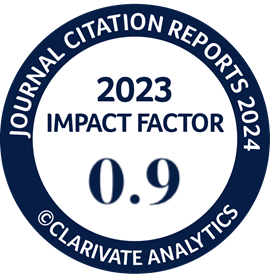Investigating Non-Newtonian Flow Characteristics of Polypropylene: A Computational Fluid Dynamics Study Utilizing COMSOL Multiphysics
DOI:
https://doi.org/10.4186/ej.2024.28.12.57Keywords:
non-Newtonian flow, polypropylene, computational fluid dynamics (CFD), COMSOL Multiphysics, rheological behavior, fluid mechanicsAbstract
Polypropylene, a plastic used across industries showcases intricate flow behaviors essential for refining manufacturing techniques. This study utilizes fluid dynamics (CFD) to simulate the flow of polypropylene through an extrusion die focusing on how its viscosity alters under varying stress levels. With the intricate design of the extrusion die in mind the research seeks to comprehend viscosity changes, velocity patterns and pressure drops as molten polypropylene moves through the mold. The analysis divides the mold into three segments for examination: the inlet radial side, outlet radial side and a narrow pathway known as the choke point within the extrusion die. By employing COMSOL Multiphysics and the Carreau model researchers explore how adjusting pressure influences flow behavior and characteristics at these zones. Results indicate that heightened pressure results in increased flow rates as polypropylene tends to thin when stressed, leading to smoother flow conditions. Moreover, it is observed that viscosity profiles become more uniform with rising pressure levels. These findings provide insights into polypropylene properties, for optimizing mold design and polymer processing methods effectively. This interdisciplinary study combines expertise with applications to offer actionable guidance for enhancing polymer processing systems in terms of both design and operation.
Downloads
Downloads

Authors who publish with Engineering Journal agree to transfer all copyright rights in and to the above work to the Engineering Journal (EJ)'s Editorial Board so that EJ's Editorial Board shall have the right to publish the work for nonprofit use in any media or form. In return, authors retain: (1) all proprietary rights other than copyright; (2) re-use of all or part of the above paper in their other work; (3) right to reproduce or authorize others to reproduce the above paper for authors' personal use or for company use if the source and EJ's copyright notice is indicated, and if the reproduction is not made for the purpose of sale.








